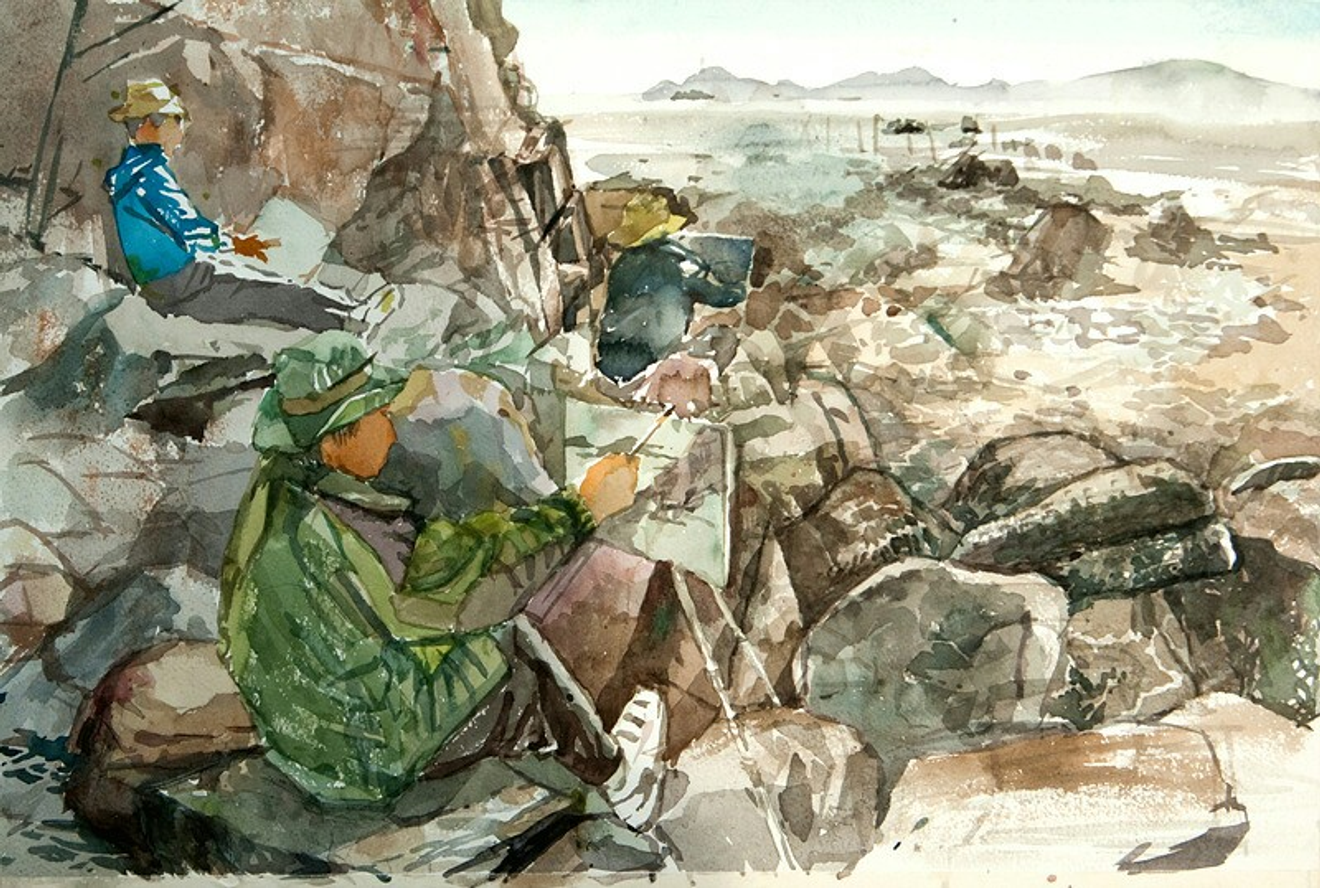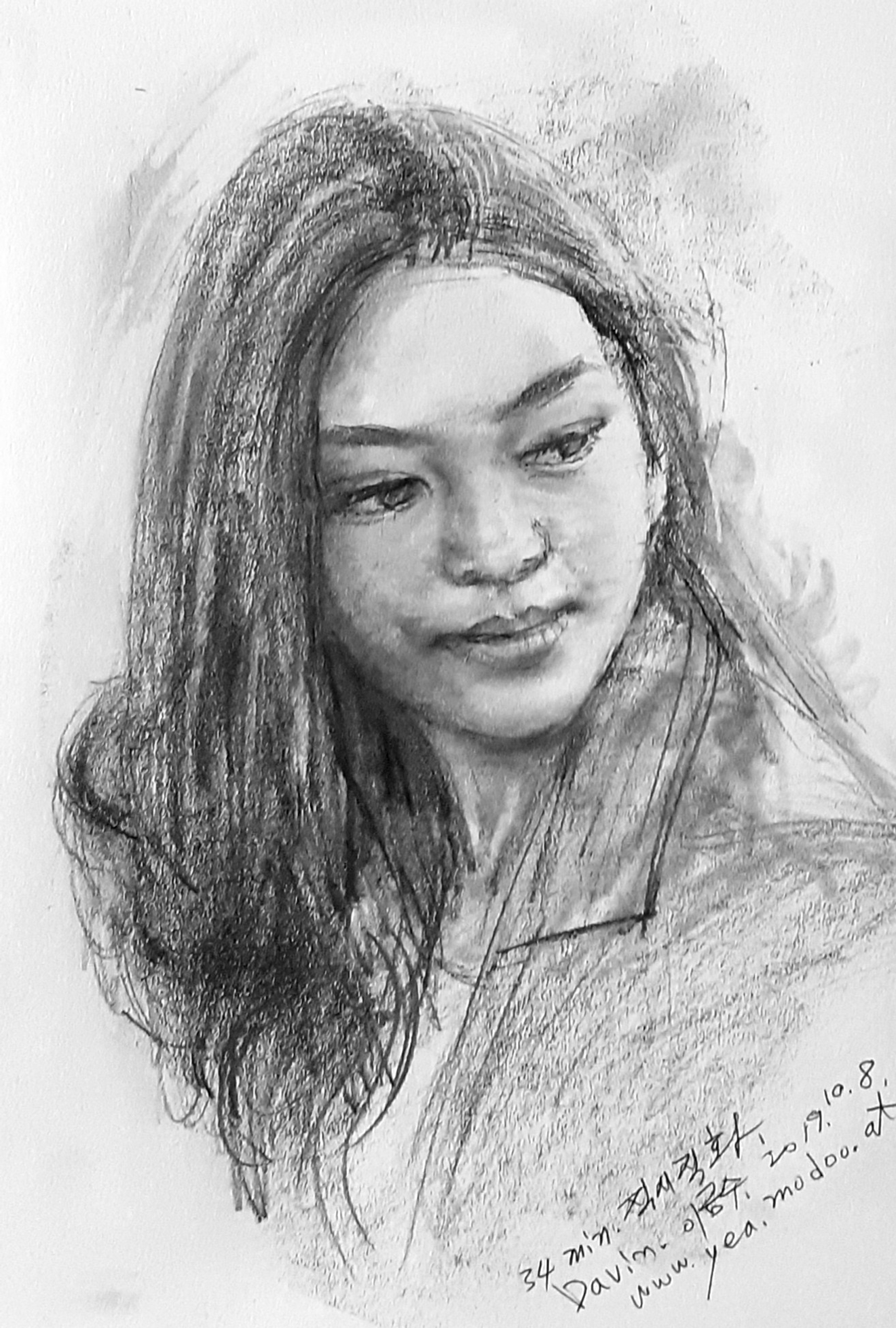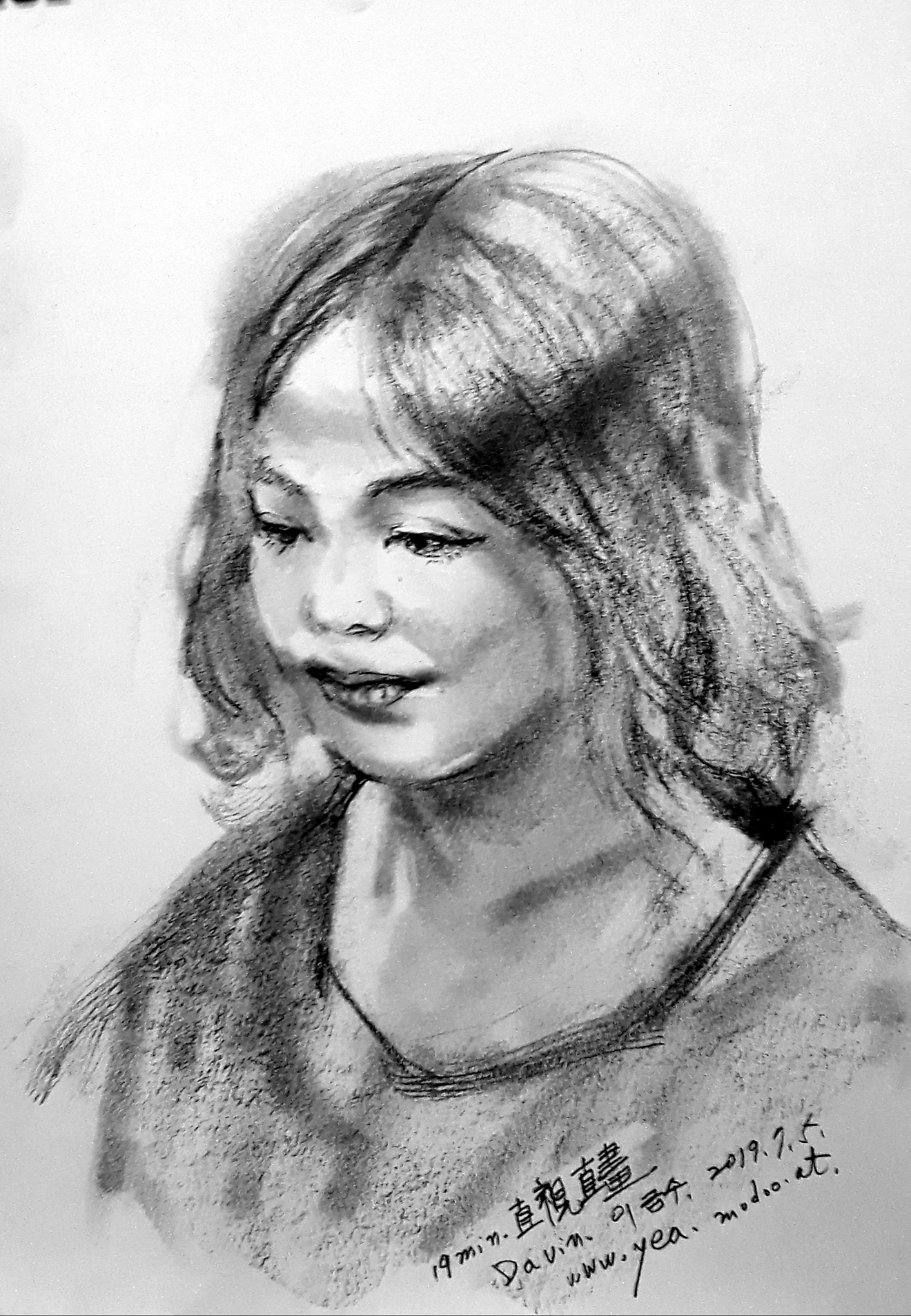Subject
- #Direct Sight Direct Drawing
- #Observation
- #Depiction
- #Eye Rolling
- #Drawing
Created: 2024-12-26
Created: 2024-12-26 16:44
Before studying the "seven visual senses" of drawing what you see as you see it, first practice the "eye-rolling technique" of drawing by moving only your eyeballs while keeping your head still, alternating your gaze between the subject and the paper.
To perform the "eye-rolling technique," the artist keeps their head vertically straight, arranging their body, the canvas, and the subject so that the three are aligned in the same direction.

[Figure 1] Watercolor landscape direct observation and direct drawing, size 10. Painters place the canvas in front of their bodies and draw while looking at the subject through the canvas.
1) Position the paper so that it is perpendicular to the artist's gaze and the artist's gaze is centered on the paper, preventing the paper from appearing trapezoidal due to perspective. Secure the paper.
It's best to use an easel. In unavoidable circumstances, when drawing on a desk or floor, secure the paper with tape to prevent it from moving. However, maintaining a right angle between the gaze and the paper is difficult, and it's easy for the head to move. Securing the paper helps in drawing what you see rather than drawing according to your imagination.
2) Secure the paper so that its edges are vertical and horizontal, using them as a reference for vertical and horizontal lines. To draw by finding the extensions of vertical and horizontal lines using your visual senses and to grasp the inclination compared to the vertical or horizontal, the edges of the paper must be positioned vertically and horizontally. If the paper's shape is not rectangular or square, lightly draw a rectangle as a reference for vertical and horizontal lines, and erase it after completing the drawing.
3) When drawing from a photograph or picture, position it perpendicular to your gaze. When drawing a three-dimensional scene, your eye and the subject automatically form a right angle, so you don't need to worry about it.
4) The <subject>, <artist's body>, and <paper> should be aligned in the same direction so that the "vertical, horizontal, and inclination in the model" match the "vertical, horizontal, and inclination on the paper."
When drawing a subject located above the canvas, the eyeballs move up and down, resulting in the fastest and most accurate drawing. If the canvas is too large to see the model above it, or if the subject is positioned to the left, right, or diagonally due to other reasons, causing the gaze to move left, right, or diagonally, or the head to move, the inclination in the model and the inclination on the paper will differ. In this case, observe the inclination of the line compared to the vertical and horizontal in the model and then convert it to an inclination compared to the vertical and horizontal on the paper. To draw quickly and easily during college entrance exams (for plaster casts), some artists might place an eraser under the left or right side of the canvas to match the inclination of the plaster cast and the drawing paper, but this isn't always possible and the tilted paper is a disadvantage.
5) Keep the artist's head, model, and paper still. The extensions of the vertical and horizontal lines change whenever any of these move. While an artist might need to step back or move their head to check their work, they should keep their head still while drawing. Even if an artist moves their head to see shading better, their eyeballs should remain fixed.

[Figure 2] Direct observation and direct drawing using the seven visual senses for 34 minutes, 27 x 39 cm.
When using your visual senses to find the "extension of vertical lines," "extension of horizontal lines," and "inclination compared to the vertical and horizontal," you must keep your head straight and still to maintain a good sense of vertical and horizontal and accurately grasp the inclination while drawing. When drawing with the visual senses of vertical, horizontal, and inclination, even when drawing a person in a slanted pose or lying down, the artist keeps their own head straight and vertical while observing the model and drawing. It's like how an artist wouldn't stand on their head to draw someone doing a handstand. While understanding the structure of the face might involve tilting one's head when viewing a model in a slanted pose, understanding structure is necessary when drawing with the help of thought, but it's not necessary when drawing solely with visual senses. In fact, when abandoning thought about structure while drawing, the visual senses become independent and develop. We abandon structural understanding to develop visual senses.

[Figure 3] Direct observation and direct drawing using the seven visual senses for 19 minutes, 27 x 39 cm, based on an actual model.
[Figure 4] Inclination, the degree to which a line is slanted, is determined based on vertical and horizontal lines.
Straighten your back, keep your head still, imagine a piece of paper in front of you, observe the subject beyond the paper, quickly move your gaze to the paper in front of you, look again at the subject beyond the paper, then quickly move your gaze back to the paper. When observing the subject, remember the shapes, points, and surfaces of the lines. When looking at the paper, draw within 13 seconds before the afterimage, or short-term memory, of what you just saw fades. If the short-term memory fades, quickly move your gaze back to the subject beyond the canvas, then back to the paper, repeatedly alternating your gaze between the subject and the paper. "Drawing what you see" involves drawing from 13 seconds of short-term memory. Drawing after seeing it once for one second and then looking again is faster and more accurate than drawing for three seconds after looking at it once. The faster the movement of the eyeballs, the faster and more accurate the drawing. If you look at the model once and draw for several minutes, you are drawing with long-term memory or thought, not sight. Drawing what you see here and now, using the visual sense of sight, is drawing what you see.
Next, we will study "cultivating the seven visual senses," starting with the first: cultivating the visual sense of perceiving vertical lines.
Comments0